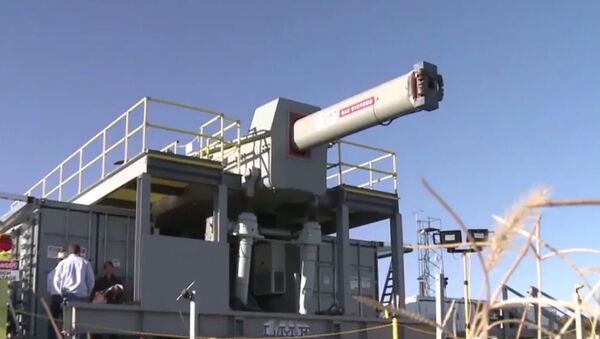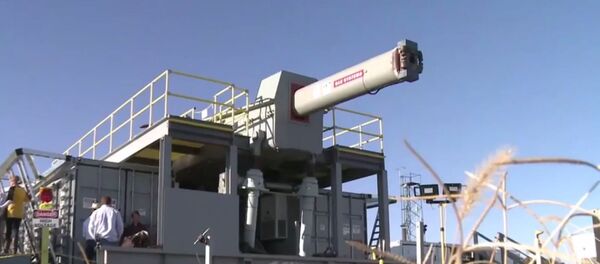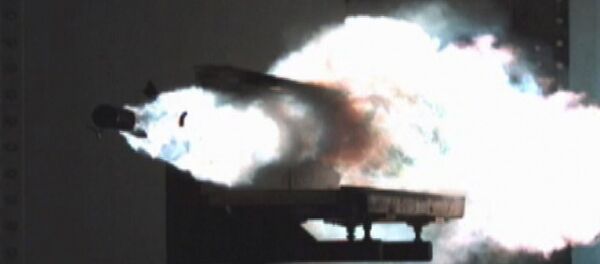"I would say that railgun is kind of the case study that would say, ‘This is how innovation maybe shouldn't happen,'" US Adm. John M. Richardson said at the Atlantic Council on Wednesday in Washington.
The US Navy has spent at least $500 million developing the weapon, which would shoot projectiles farther and faster using electromagnetic currents instead of chemical explosives. One of the ideas behind the weapon is that it could shoot projectiles at hypersonic speeds such that the projectile's kinetic impact alone would render explosives-based railgun projectiles redundant.
"It's been around, I think, for about 15 years, maybe 20. So, ‘rapid' doesn't come to mind when you're talking about timeframes like that," the admiral said at the Council's Scowcroft Center for Strategy and Security.
More time and more money won't suffice to fix the railgun's engineering problems, since the project has had plenty of both and yet still faces challenges. "The engineering of building something like that, that can handle that much electromagnetic energy and not just explode, is challenging," said Richardson.
Sputnik News warned in May of 2017 that the "game changer" weapon system was on the verge of being permanently shelved as the Pentagon's Strategic Capabilities Office sought to starve the railgun of funds. "People at SCO don't want to fund the railgun because they're simply not buying it," a Capitol Hill staffer said at the time.
The head of naval operations is holding out hope for a turnaround anyway. "So, we're going to continue after this, right? We're going to install this thing. We're going to continue to develop it, test it… it's too great a weapon system, so it's going somewhere, hopefully."
Meanwhile, images of a railgun mounted onto the bow of a Chinese Type 072II-class landing ship last month prompted informed speculation the ship was heading out for sea trials, Sputnik reported.
The railgun was once intended for the US Navy's Zumwalt-class stealth warship program, but that program has been a virtual failure, according to watchdogs. "If the US war in Afghanistan were a ship, it would be a Navy Zumwalt-class destroyer," the Project on Government Oversight says of the US Navy's ‘Titanium Tin Cans.' Alas, "inside a Pentagon spending nearly $2 billion a day, it's easy to lose sight of truly wasteful programs," POGO noted in a report last month.




